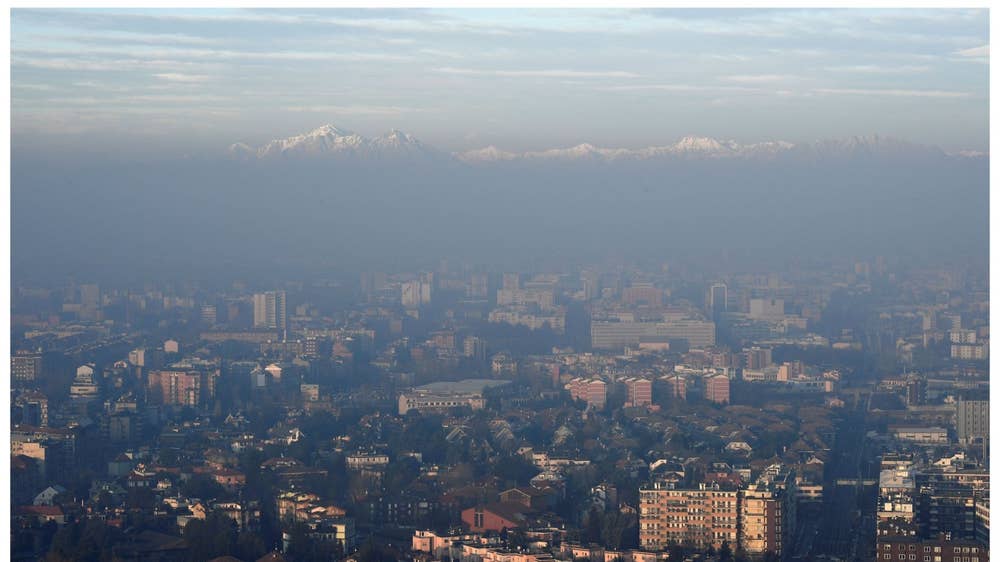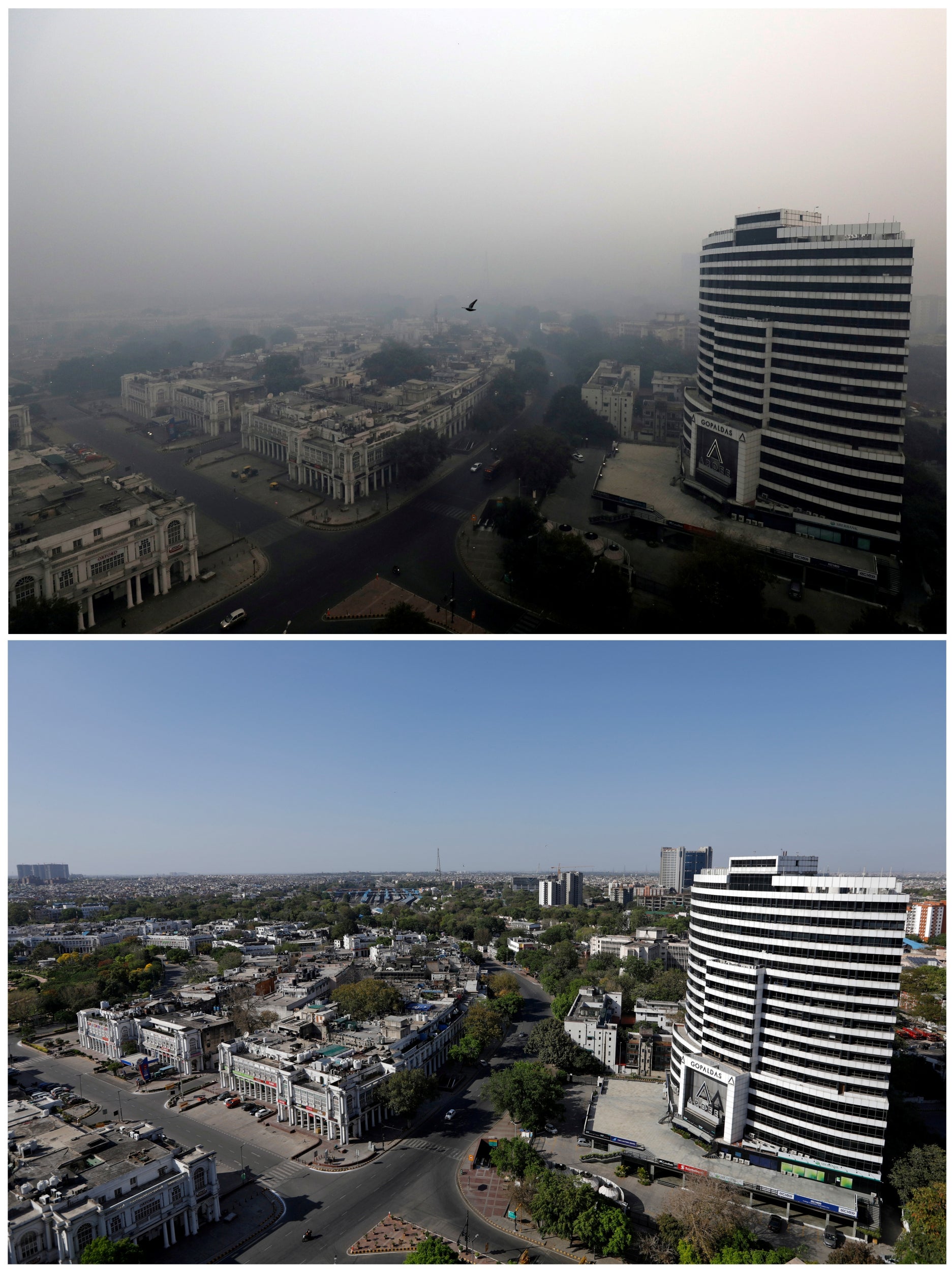On this last day of April, the UK should be carrying out 100,000 daily tests for coronavirus, under the timetable set out by Matt Hancock, the health secretary, four weeks ago.
There is next to no chance of the target being hit – threatening severe embarrassment for Mr Hancock, when confirmed within days – but the real question is not simply how many people are being tested. It is who is being tested – and where, and why?
And to explain that, say the fiercest critics of the testing saga, we have to go back to a decision taken, almost without being noticed, seven weeks ago.
Download the new Independent Premium app
Sharing the full story, not just the headlines
It was barely mentioned at the time, failing to hit any headlines as the terrible crisis unfolded, but it is a twist crucial to understanding the troubled tale of testing for coronavirus that followed.


1/6
Milan, Italy
REUTERS

2/6
North Jakarta, Indonesia
REUTERS

3/6
Jakarta, Indonesia
REUTERS

4/6
Venice, Italy
REUTERS

5/6
New Delhi, India
REUTERS

6/6
Islamabad, Pakistan
REUTERS

1/6
Milan, Italy
REUTERS

2/6
North Jakarta, Indonesia
REUTERS

3/6
Jakarta, Indonesia
REUTERS

4/6
Venice, Italy
REUTERS

5/6
New Delhi, India
REUTERS

6/6
Islamabad, Pakistan
REUTERS
On 12 March, a sombre Boris Johnson rose to warn the nation that Covid-19 was taking grip, that “many more” families would lose loved ones and people with symptoms should stay at home for seven days.
The UK was still almost two weeks away from lockdown, but it was the day that efforts to “contain” the spread of the disease were abandoned – in favour of “delay” – which meant community testing and the tracing of the contacts of positive cases was stopped.
“If we hadn’t stopped it on 12 March, our epidemic would have been much less. They effectively allowed it to spread,” says Anthony Costello, a professor of global health at University College London.
Over the next two weeks, the death toll for the UK would rise sharply – it now stands at third highest in the world – and, amid a storm of criticism that the government was failing badly, Mr Hancock made his pledge of 100,000 daily tests on 2 April.
At the time, just 10,000 people a day were being tested and staff absence levels in the NHS were soaring as medics with symptoms were forced to stay home, when they were badly needed on emergency wards.
The government had set a target of 25,000 daily tests by mid-April – which it was to miss by a mile – and Mr Johnson had once pledged the wildly implausible 250,000 a day, with no deadline attached.
The latest news on Brexit, politics and beyond direct to your inbox
From the moment he spoke on 2 April, it seemed clear the health secretary was winging it, as observers were left scratching their heads about exactly what he was promising.
Would the tests be to establish who has the virus now, or an antibody test to establish who had previously had Covid-19? The health secretary had also promised home “fingerprick” tests and “immunity certificates” for people given the all-clear to return to normal life.
Mr Hancock was unclear. He also announced a “five pillar” plan with one measure, creating a German-style mass diagnostic industry from scratch – during a pandemic – seemingly plucked from thin air in desperation to reach the magic tally of five.
Before too long, hopes of fingerprick tests had evaporated, as they were found to be inaccurate, whereupon ministers – thanks to The Independent – had to publicly commit to 100,000 daily virus tests.
From that moment, Mr Hancock’s fate was sealed, not least because sick NHS and care workers, and care residents, were expected to drive for hours to distant testing centres in order to establish whether they had Covid-19. Those centres stood idle as a consequence.
There are still only 16 mobile testing labs, with the remaining 80 that were promised not set to be up-and-running until the weekend at the earliest.
As a result, more than two weeks after everyone in a care home with symptoms was promised a test, many are still missing out – even as deaths in those homes rise sharply.
Nevertheless, Mr Hancock can claim some successes. There is now capacity for 73,400 tests and 52,249 were carried out on Wednesday – although on only around 33,000 people, after retests – which meant he could offer them to millions of other key workers, although the online booking system immediately crashed.
He has now expanded the offer to all over-65s and workers who need to leave their homes with symptoms, and their household members. By the end of the week, 25,000 a day could be carrying out home tests.
It is striking that the man credited with Germany’s testing miracle – a virology expert named Christian Drosten – said this week that the UK was “really gaining momentum” and now “coordinating testing efforts better than Germany”.
But … it is the gap between testing capacity (73,400) and actual tests (only 52,249) that exposes where the UK misfired.
If everyone agrees testing is critical – and spare test kits are literally lying around – why are they not being put to use?
The answer is that Mr Hancock has been testing only NHS and care workers and their families (now other key workers), because community testing was stopped on 12 March.
He finally switched tack on 23 April, announcing that an 18,000-strong army would be recruited to trace and potentially isolate the contacts of suspected cases who would now, finally, all be tested – admitting it was the key to conquering the virus and easing the lockdown.
But the mass programme came a full five weeks after the World Health Organisation urged all nations to “test, test, test” – a plea explicitly rejected by the UK at the time. And, crucially, it will not begin until mid-May, at the earliest.
Now, ministers have been criticised for using the phrase “following the science” as a shield for ducking hard decisions, but on this occasion they had a ready defence.
Jenny Harries, the deputy chief medical officer, on 26 March, explained the decision to halt community work: “There comes a point in a pandemic where that is not an appropriate intervention. And that is the point where we moved into ‘delay’. And, although we still do some contact tracing and testing, for example in high-risk areas like prisons and care homes, that is not an appropriate mechanism as we go forward.”
Ministers have justified last week’s U-turn on the grounds that community testing and tracing can only be successful after infections drop sharply, which was news to nations such as South Korea, Germany, Singapore and Vietnam, where it never stopped.
Perhaps worse, the evidence was growing that the experts at this were sitting around twiddling their thumbs when they could at least have been recruited for when testing restarted.
There are round 5,000 local council environmental health workers – and thousands more in the private sector, now furloughed in the shutdown – with years of tracing the victims of salmonella, Legionnaires’ disease and even norovirus.
But Public Health England had made no effort to deploy them, a “missed opportunity” said Gary McFarlane, of the Chartered Institute of Environmental Health.
Earlier deployment would have boosted testing numbers towards the magic 100,000 figure. Moreover, scientific opinion – in contrast to Ms Harries’s cast-iron certainty – is split down the middle on the wisdom of halting community testing in the first place.
Mr McFarlane said it was too early to pass judgment, telling The Independent: “Now is not the time to have that autopsy, it would be a distraction. We are where we are.”
But he added: “Testing and contact tracing are fundamentally linked and we cannot start to relax the lockdown until we have a robust system of tracing the cases really fast and isolating them.
“If we don’t do that we will end up exactly where we were a week ago. The virus hasn’t gone away, it’s still out there and we haven’t got a vaccine yet.”
But Allyson Pollock, professor of public health at Newcastle University, is scathing, blaming the way disease control services have been “decimated” over the decade of austerity.
She said, even now, local councils were being denied information on the number of new infections in their areas, which could have allowed testing and tracing to be under way already.
Mr Hancock had, the professor said, also been distracted by his dream of a smartphone app to guide tracing, which even its developer has warned it requires a daunting 60 per cent take-up to be successful.
“We have announcements that they are going to track and trace, but we don’t yet know how,” Ms Pollock said.
“I cannot understand why contact tracing – which is the key guidance of the World Health Organisation – is not being followed and why the UK appeared to be making it up as it goes along, rather than using the standard international advice that has been followed in every other country which has managed to deal with this virus well.”
The Independent has put these criticisms to the Department of Health and Social Care but has not received a response.
Mr Hancock will hit his 100,000 target, albeit late, but that scarcely matters by itself. The “who, where and why” are so much more crucial.



